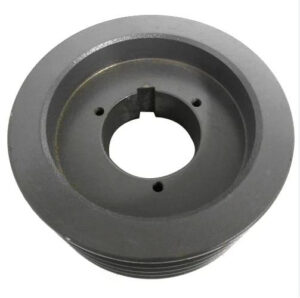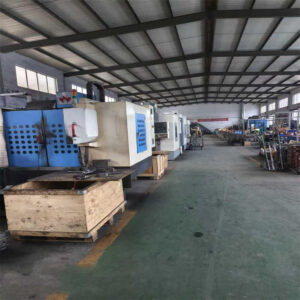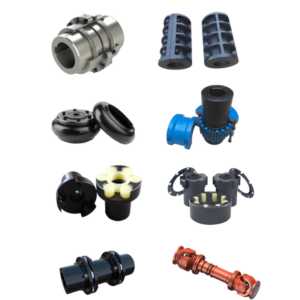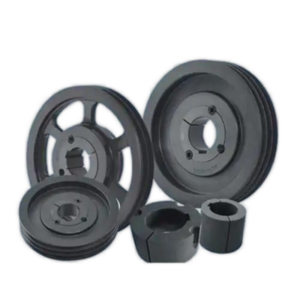- Power Transmission
Belt pulleys are widely used in heavy machinery power transmission systems, particularly in applications where high load transfer is required. By connecting different mechanical parts through belts, belt pulleys efficiently transmit rotational power from motors to other components. - Speed Regulation
In many heavy machines, belt pulleys can adjust the speed by changing their size (e.g., using different pulley diameters). Larger pulleys reduce speed, while smaller pulleys increase speed. This is crucial for machinery to adapt to varying operational conditions. - Vibration Dampening and Noise Reduction
In some heavy machinery, belt pulleys help reduce system vibration and noise, especially during long-term operations. They absorb mechanical stress and enhance the overall life of the equipment. - Adaptation to Harsh Working Environments
Heavy machinery often operates in challenging environments, such as high temperatures, humidity, and heavy loads. Selecting the right material and design for the pulley ensures stable performance in these extreme conditions. For instance, cast steel pulleys for high temperatures or corrosion-resistant aluminum pulleys can offer better performance in specific environments. - Large Industrial Equipment Applications
In large-scale industrial machinery like mining, steel mills, and smelting plants, belt pulleys are critical for connecting large motors to various machinery systems. They ensure stable and continuous power transmission for heavy-duty operations.
Key Factors in Selecting Belt Pulleys
- Material Selection
The material of the belt pulley is crucial for its durability and operational efficiency. Common materials used for heavy machinery pulleys include:- Cast Iron: Strong, suitable for high-load transmissions.
- Aluminum Alloy: Lightweight and corrosion-resistant, ideal for applications requiring less weight.
- Steel: Suitable for applications that need higher strength and wear resistance.
- Stainless Steel: Provides excellent corrosion resistance, ideal for extreme environments like high temperatures or exposure to moisture and chemicals.
- Pulley Size and Design
The pulley size and design should be selected based on the required speed and torque. Common designs include single-groove, double-groove, or multi-groove pulleys. The groove design depends on the type of belt used (V-belt, round belt, or timing belt). - Load Capacity
The load capacity is a key consideration when choosing a belt pulley for heavy machinery. Pulleys should be sized and designed to handle the equipment’s power and working load, ensuring stable performance under high stress. - Operating Environmental Conditions
When selecting a belt pulley, it’s important to consider the environmental conditions, such as temperature, humidity, contaminants, and potential mechanical shocks. If the working environment is harsh, special materials like high-temperature-resistant alloys or anti-corrosion coatings should be considered. - Belt Type and Compatibility
The pulley and belt must match to ensure proper system efficiency and long life. Different types of belts (e.g., V-belts, flat belts, timing belts) require specific pulley grooves. Proper matching of pulleys and belts ensures maximum performance and reduces wear and tear. - Maintenance and Replacement Cycle
It’s important to consider the maintenance and replacement cycle when selecting a pulley for heavy machinery. Regular inspection, lubrication, and timely replacement can significantly extend the lifespan of the pulley and the machinery it supports.
Conclusion
Belt pulleys play a crucial role in heavy machinery, influencing power transmission efficiency, durability, and overall performance. When selecting a pulley, factors such as load capacity, speed requirements, environmental conditions, material choice, and belt compatibility must be carefully considered. Properly chosen pulleys ensure enhanced productivity, reduced equipment failures, and longer operational life.
If you have specific applications or machinery types in mind, I can help further narrow down the pulley selection for optimal performance.







